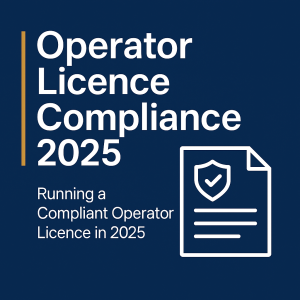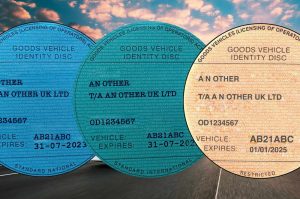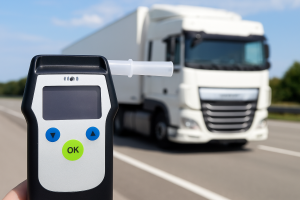Why Drink and Drug Driving Are Critical Issues for Professional Drivers
For professional drivers, the consequences of drink or drug driving go far beyond fines or bans — they can destroy a career, revoke vocational entitlements, and damage an operator’s repute.
Holding a vocational licence — Category C1, C1E, C, CE, D1, D1E, D or DE — means you are held to a higher standard under the law. Both the DVSA and Traffic Commissioners expect transport managers and operators to maintain strict control over driver fitness and behaviour.
Drink or drug driving isn’t just a criminal offence — it’s a serious breach of safety and compliance. The Health and Safety Executive (HSE) reminds employers that they have a legal duty under the Health and Safety at Work etc. Act 1974 to protect staff and the public from foreseeable risks. That includes the risk of allowing anyone under the influence of alcohol or drugs to operate a vehicle.
The Legal Drink and Drug Driving Limits in the UK
The legal alcohol limits for driving vary across the UK, while the limits for certain controlled drugs are set in regulations under the Road Traffic Act 1988. Professional drivers are expected to meet the strictest standards possible — ideally, a zero-tolerance policy for both alcohol and drugs when on duty or before starting work.
Alcohol Limits
| Location | Blood Alcohol Limit | Breath Alcohol Limit | Notes |
|---|---|---|---|
| England, Wales & Northern Ireland | 80mg per 100ml blood | 35 micrograms per 100ml breath | Standard legal limit under the Road Traffic Act |
| Scotland | 50mg per 100ml blood | 22 micrograms per 100ml breath | Stricter Scottish limit since 2014 |
| Professional / vocational drivers (operator policy) | 20mg per 100ml blood | 9 micrograms per 100ml breath | Industry best practice — many operators apply this internally |
Even small amounts of alcohol can impair judgement, reaction time and coordination. The safest level for a professional driver is zero.
Drug Driving Limits
Drug driving laws apply to illegal drugs and prescription medications that can impair driving ability.
- Driving or attempting to drive while unfit through drugs — covers any substance (illegal or legal) that impairs ability.
- Driving with certain controlled drugs in the body above specified limits — a strict-liability offence even without visible impairment.
Examples of legal limits (blood concentration, micrograms per litre):
| Drug | Limit (µg/L) | Notes |
|---|---|---|
| Cannabis (THC) | 2 | Effectively zero tolerance |
| Cocaine | 10 | Very low threshold |
| MDMA (Ecstasy) | 10 | Zero tolerance |
| Ketamine | 20 | Zero tolerance |
| Benzoylecgonine (cocaine metabolite) | 50 | Common cause of positive tests |
| Morphine (incl. heroin) | 80 | Prescription use must be declared |
| Diazepam / Lorazepam / Temazepam | 550 | Prescription drugs — legal if taken as prescribed, but can still impair |
Even prescribed medication can make a driver unfit. Strong painkillers, sleeping tablets or anti-anxiety medication are common examples. Drivers taking medication that causes drowsiness, dizziness or delayed reaction times should speak to their GP or pharmacist and inform their employer immediately.
Penalties for Drink and Drug Driving
Drink and drug driving carry identical penalties — both are serious criminal offences. Conviction almost always means losing your licence and your career.
- Driving or attempting to drive while over the alcohol or drug limit: up to 6 months in prison, an unlimited fine, and a minimum 12-month driving ban.
- Being in charge of a vehicle while over the limit: up to 3 months in prison, a fine of up to £2,500, and a possible driving ban.
- Refusing to provide a specimen: treated as if over the limit — the same penalties apply.
- Causing death by careless driving under the influence of drink or drugs: possible life imprisonment, an unlimited fine, and a long-term driving ban.
Convictions result in endorsement codes (e.g., DR10, DG10) that remain on a licence for up to 11 years. For vocational drivers, that is often career-ending.
Employer and HSE Responsibilities
The HSE expects employers to take reasonable steps to prevent employees driving while impaired. That means having clear alcohol and drug policies, conducting driver checks, and acting when there are signs of substance misuse.
- Include alcohol and drug testing in risk assessments where driving is safety-critical.
- Define disciplinary procedures for breaches.
- Provide regular training and awareness on the risks of drink and drug driving.
- Support drivers who voluntarily disclose dependency issues and seek help.
Under the Health and Safety at Work etc. Act, employers must protect employees and the public from foreseeable risks. Allowing a driver under the influence to work can trigger enforcement by the Traffic Commissioner or HSE.
DVSA, DVLA and Fitness to Drive
The DVSA enforces driver conduct standards. Repeated or serious drink/drug driving offences can lead to loss of vocational entitlement or a Public Inquiry for the operator.
The DVLA assesses medical fitness to drive. Any driver diagnosed with alcohol or drug misuse or dependence can have their licence suspended or revoked until medically cleared.
Operators and Transport Managers must monitor driver conduct and take proactive steps to ensure drivers are fit to drive — including spotting signs of dependency, erratic behaviour, or unexplained absences.
Best Practice for Drivers and Operators
- Never drive after consuming alcohol or using drugs — even small amounts impair ability and judgement.
- Remember the “morning after” effect — alcohol and some drugs can remain in your system for many hours.
- Declare any prescription medication that could affect driving.
- Adopt a zero-tolerance policy to alcohol and drugs before or during work.
- Report fitness-to-drive concerns about yourself or a colleague to the Transport Manager.
- Provide/attend awareness training and enable confidential support or rehabilitation services.
Summary
Drink and drug driving destroy careers, businesses and lives. For professional drivers, the only acceptable limit is zero. Staying within the law isn’t enough — the expectation from the DVSA, HSE, and Traffic Commissioners is total sobriety and fitness to drive.
Protect your licence, protect your livelihood, and protect the public — don’t drink or drug drive.


